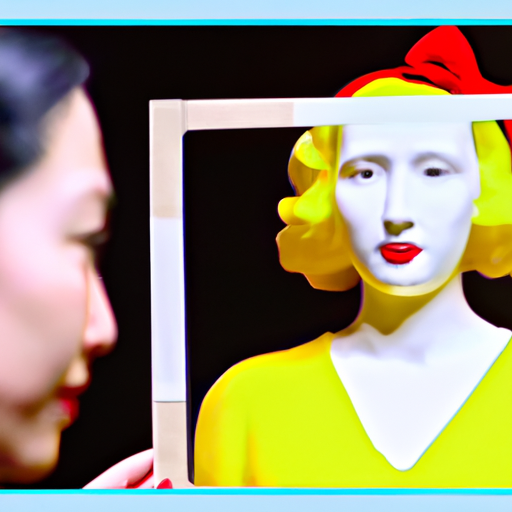
-
Table of Contents
- Crafting Graphics for Educational Apps and Platforms
- The Power of Visuals in Education
- Understanding the Target Audience
- Aligning Graphics with Learning Objectives
- Choosing the Right Graphic Style
- Creating Interactive Graphics
- Optimizing Graphics for Performance
- Case Studies: Successful Implementation of Graphics in Educational Apps
- Case Study 1: Duolingo
- Case Study 2: Khan Academy
- Conclusion
Crafting Graphics for Educational Apps and Platforms

Graphics play a crucial role in educational apps and platforms, enhancing the learning experience and engaging students in a visually stimulating way. Effective graphics can help convey complex concepts, improve retention, and make learning more enjoyable. In this article, we will explore the importance of crafting graphics for educational apps and platforms, and provide valuable insights on how to create compelling visuals that enhance the educational experience.
The Power of Visuals in Education
Visuals have long been recognized as powerful tools for learning. Research has shown that the human brain processes visual information faster and more effectively than text alone. In fact, studies have found that people remember up to 80% of what they see and do, compared to only 10% of what they hear and 20% of what they read.
When it comes to educational apps and platforms, visuals can significantly enhance the learning process. They can help simplify complex concepts, break down information into digestible chunks, and provide a visual representation of abstract ideas. By incorporating graphics into educational materials, developers can create a more immersive and engaging learning experience.
Understanding the Target Audience
Before crafting graphics for educational apps and platforms, it is essential to understand the target audience. Different age groups and educational levels have varying visual preferences and cognitive abilities. For example, younger children may respond better to colorful and playful graphics, while older students may prefer more sophisticated and realistic visuals.
Consider conducting user research or surveys to gather insights into the preferences and needs of the target audience. This information can help guide the design process and ensure that the graphics resonate with the intended users.
Aligning Graphics with Learning Objectives
Graphics should not be used for the sake of aesthetics alone. They should align with the learning objectives and enhance the educational content. Before creating graphics, it is crucial to identify the key concepts or ideas that need to be conveyed and determine how visuals can support and reinforce those concepts.
For example, if the learning objective is to teach students about the solar system, graphics can be used to illustrate the planets, their orbits, and their relative sizes. By visualizing these concepts, students can better understand and remember the information.
Choosing the Right Graphic Style
The graphic style chosen for educational apps and platforms should be appropriate for the target audience and the subject matter. There are various graphic styles to consider, such as realistic, cartoonish, minimalist, or infographic-style graphics.
For younger children, a more playful and colorful graphic style may be suitable, while older students may respond better to a more sophisticated and realistic style. The graphic style should also align with the overall branding and design of the app or platform to create a cohesive visual experience.
Creating Interactive Graphics
Interactive graphics can greatly enhance the educational experience by allowing students to actively engage with the content. Interactive elements can include drag-and-drop activities, quizzes, puzzles, and simulations. By incorporating interactive graphics, students can explore concepts in a hands-on manner, reinforcing their understanding and retention.
For example, in a language learning app, interactive graphics can be used to teach vocabulary through interactive flashcards or games. Students can drag and match words with corresponding images, making the learning process more interactive and enjoyable.
Optimizing Graphics for Performance
When crafting graphics for educational apps and platforms, it is important to consider performance optimization. Graphics that are too large or complex can slow down the app or platform, leading to a poor user experience. To optimize graphics for performance:
- Use appropriate file formats: Choose the right file format for each graphic to balance quality and file size. For example, JPEG or PNG formats are commonly used for static images, while GIF or SVG formats are suitable for animations or scalable graphics.
- Compress images: Reduce the file size of images without compromising quality by using compression techniques or tools.
- Consider device limitations: Take into account the capabilities and limitations of the devices on which the app or platform will be used. Optimize graphics accordingly to ensure smooth performance.
Case Studies: Successful Implementation of Graphics in Educational Apps
Several educational apps and platforms have successfully implemented graphics to enhance the learning experience. Let’s explore a few case studies:
Case Study 1: Duolingo
Duolingo, a popular language learning app, effectively uses graphics to teach vocabulary and grammar. The app incorporates colorful and interactive graphics that engage users and make the learning process enjoyable. By visualizing words and phrases, Duolingo helps users associate meaning with visuals, improving retention and understanding.
Case Study 2: Khan Academy
Khan Academy, an online learning platform, utilizes graphics to simplify complex concepts in subjects like math and science. The platform provides step-by-step visual explanations, making it easier for students to grasp difficult topics. By breaking down information into visual chunks, Khan Academy enhances comprehension and retention.
Conclusion
Crafting graphics for educational apps and platforms is a powerful way to enhance the learning experience. By understanding the target audience, aligning graphics with learning objectives, choosing the right graphic style, creating interactive elements, and optimizing graphics for performance, developers can create compelling visuals that engage and educate students.
Remember, visuals have the potential to simplify complex concepts, improve retention, and make learning more enjoyable. By incorporating well-crafted graphics into educational apps and platforms, developers can create a more immersive and effective learning environment.
